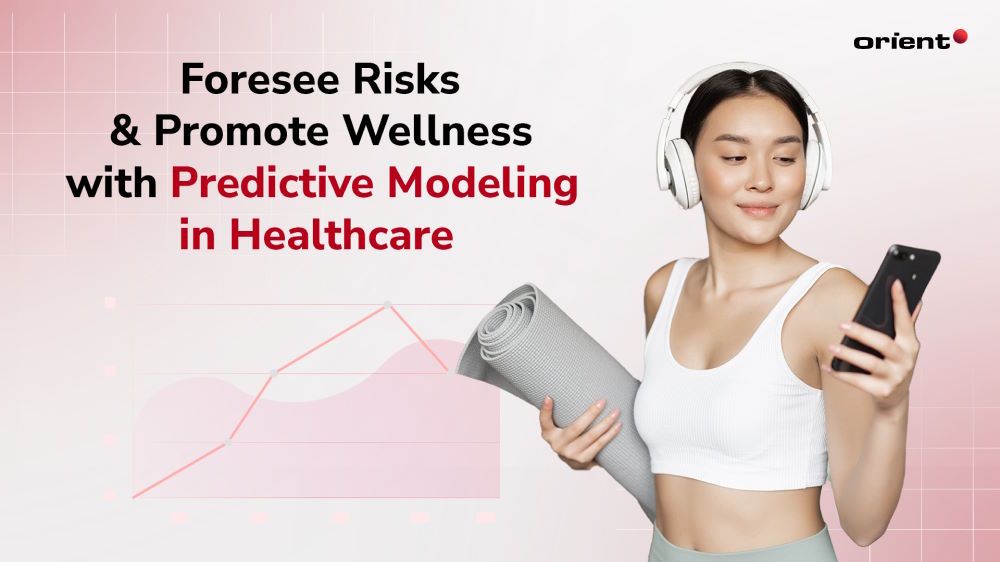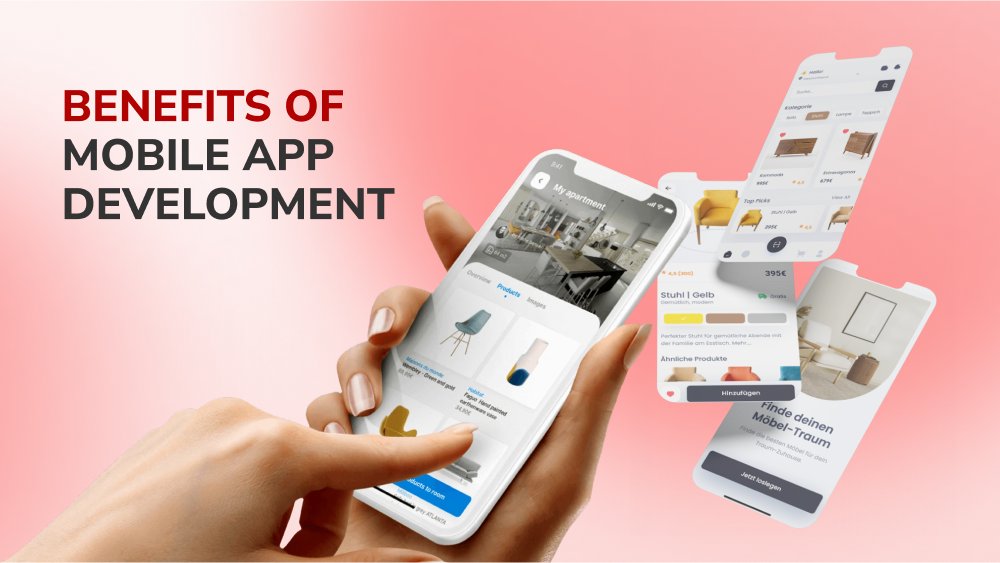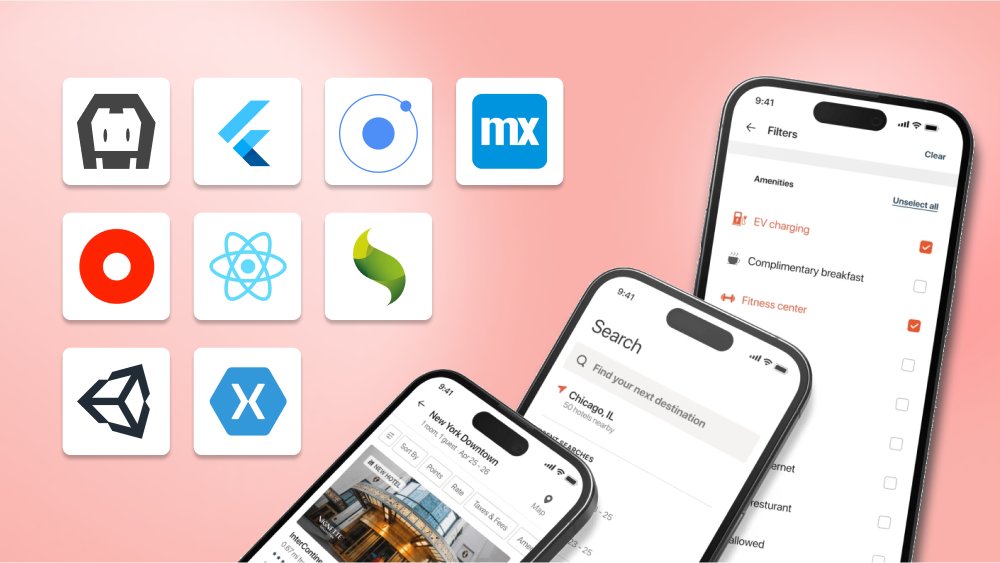Foresee Risks and Promote Wellness with Predictive Modeling in Healthcare

Content Map
More chaptersThe healthcare industry is facing an unprecedented amount of data, with electronic health records, wearable devices, and other digital tools generating vast amounts of information every day. This data has the potential to transform healthcare, but only if it can be analyzed and used effectively. That’s where predictive modeling in healthcare comes in.
Predictive modeling is a powerful approach that can help healthcare providers foresee risks, promote wellness, and improve patient outcomes. By analyzing large datasets and identifying trends and patterns, predictive modeling can help healthcare organizations come up with more informed decisions and take proactive steps to prevent health issues before they become serious.
According to a report by Deloitte, predictive analytics in healthcare can help reduce patient risk and lower overall costs by detecting illnesses early, identifying patterns of community and cohort health, and delivering personalized care that aligns with patient preferences. By peering into the future of health risks and flagging those most in need, the predictive model foretells a healthcare revolution focused on prevention instead of crisis management. The possibilities for promoting population wellness and precision care are only just emerging.
Understanding Predictive Modeling in Healthcare

Predictive analysis is a statistical technique that analyzes historical data to make predictions about future events. In the context of healthcare, predictive analytics involves statistical algorithms, the use of data, and machine learning techniques to identify the likelihood of future clinical outcomes based on historical patient data.
By analyzing patient data, such as demographics, medical history, and diagnostic tests, predictive modeling can help medical professionals forecast disease progression, identify high-risk patients, and optimize treatment plans. This data and analytics technology approach empowers healthcare providers’ clinical decision support, improves patient outcomes, and efficiently allocates resources.
In predictive modeling, a data-driven approach is employed to extract valuable insights from medical data. This approach involves the following steps:
- Data Collection: Relevant data is collected from many sources, such as medical claims, electronic health records (EHRs), and wearable devices. This data includes patient demographics, clinical measurements, laboratory results, and treatment histories.
- Data Preprocessing: The gathered information is cleaned, organized, and made ready for analysis. This step involves handling missing values, normalizing data, and addressing any inconsistencies or errors.
- Feature Selection: Relevant features or variables that contribute to the predictive model’s accuracy are identified. This step involves statistical techniques and domain expertise to determine the most significant predictors.
- Algorithm Selection: Various algorithms are employed to build predictive models. Commonly used algorithms include logistic regression, random forests, decision trees, neural networks, and support vector machines. The choice of algorithm depends on the specific prediction task and the characteristics of the dataset.
- Model Training and Validation: The selected algorithm is trained by using a subset of the data and validated to ensure its accuracy and generalizability. This process often involves splitting the data into training and testing sets, tuning model parameters, and evaluating performance metrics like accuracy, precision, recall, and area under the curve (AUC).
- Model Deployment and Evaluation: Once the model is trained and validated, it can be deployed in real-world healthcare settings. Ongoing evaluation is conducted to monitor the model’s performance, assess its impact on clinical decision-making, and refine the model as new data becomes available.
By employing sophisticated algorithms and leveraging vast amounts of clinical data, predictive modeling brings valuable insights that enable the healthcare system to proactively manage patient care, improve resource allocation, and enhance overall healthcare delivery.
How Predictive Analytics Benefit Healthcare
Early Risk Factors Identification and Prevention
A predictive analytics model serves as an early warning system in healthcare, providing a crucial advantage in the fight against disease. Analyzing historical and real-time data can identify patients at high risk for various conditions, from chronic diseases to potential outbreaks. This foresight enables the health system to intervene early, offering preventive measures that can halt or slow the progression of illness. The result is a significant reduction in the incidence and severity of diseases, leading to healthier populations and less strain on healthcare systems.
Personalized Treatment and Care
The power of predictive analytics models extends to the personalization of patient care. By integrating data from genetic profiles, lifestyle factors, and previous health records, predictive models can forecast the most effective treatment plans for individual patients. This bespoke approach ensures that each patient receives the right treatment at the right time, increasing the likelihood of positive outcomes. Personalized care also enhances patient engagement and satisfaction, as treatments are tailored to their specific needs and circumstances.
Resource Optimization and Cost Reduction
Healthcare systems worldwide are under pressure to deliver high-quality care while managing limited resources. Predictive modeling is a game-changer in this regard, optimizing the allocation of resources such as hospital beds, medical staff, and equipment. By predicting patient admissions and health trends, hospitals can better prepare for demand surges and allocate resources more efficiently. Additionally, by preventing disease and streamlining treatment protocols, predictive modeling contributes to significant cost savings, making healthcare more affordable and accessible.
Applications of Predictive Modeling in Healthcare
Predictive modeling has become an increasingly popular tool in healthcare. Here are four key applications of it in healthcare.
Disease Diagnosis and Progression
Predictive modeling is revolutionizing the field of disease diagnosis and progression. By utilizing advanced algorithms and vast datasets, healthcare professionals can now detect diseases at an early stage, leading to more accurate diagnoses. This early detection is crucial for conditions such as cancer, where the stage at diagnosis significantly impacts survival rates. Furthermore, predictive models are instrumental in forecasting disease progression and treatment outcomes. They enable doctors to personalize treatment plans, anticipate potential complications, and improve overall patient care.
Patient Readmission and Hospital-Acquired Infections
Hospital readmissions are a significant concern for healthcare systems, often indicating gaps in care or recovery. Predictive modeling helps identify patients at high risk of readmission, allowing healthcare providers to implement preventative measures, improve patient outcomes, and reduce costs. Similarly, predictive models are employed to assess the risk of hospital-acquired infections (HAIs), which are a major cause of morbidity and mortality. By analyzing factors like patient demographics, surgical history, and hospital environment, these models can help in implementing targeted infection control strategies.
Chronic Disease Management
Chronic diseases require ongoing management and care. Predictive models are increasingly used to tailor personalized interventions and proactive care plans for patients with chronic conditions, including heart disease, diabetes, and asthma. These models take into account individual patient histories and behavior patterns to predict future health events, enabling timely interventions. Additionally, they assist in monitoring disease progression and adjusting treatment plans as needed, ensuring that patients receive the most effective care at the right time.
Population Health Management
At a broader level, predictive modeling serves as a powerful tool for population health management. It can predict health trends and potential disease outbreaks, facilitating early public health interventions. For instance, during the COVID-19 pandemic, predictive models were crucial in forecasting infection rates and hospital resource needs. Moreover, these models support targeted interventions and preventive measures, such as vaccination campaigns, by identifying populations at risk and optimizing resource allocation.
Real-world Examples of Successful Predictive Modeling in Healthcare
Predictive modeling has been successfully implemented in various real-world healthcare cases:
Predictive Analysis for Sepsis Detection
The fight against sepsis, a life-threatening response to infection, has been significantly bolstered by predictive analytics. For example, a system developed at Johns Hopkins University employs AI to scan medical records and clinical notes, catching symptoms of sepsis hours earlier than traditional methods. This early detection is crucial, as patients are 20% less likely to die from sepsis when it is identified promptly. Another study reviewed various predictive analytics solutions, including logistic regression and support vector machines, which utilized features from vital signs to gene expression data, demonstrating the potential of these tools in early sepsis detection.
Early Detection of Cardiovascular Diseases
Predictive models have made substantial contributions to the early detection of cardiovascular diseases (CVDs). A study demonstrated a comprehensive framework for predicting cardiac disease using advanced machine learning algorithms, with an accuracy of up to 97%. Another research utilized an XGBoost model optimized for cardiovascular diseases, yielding an impressive 98.50% accuracy, 99.14% precision, and a 98.71% F1 score, showcasing the model’s diagnostic accuracy for heart disease.
Predictive Analytics in Mental Health Treatment
In mental health, predictive analytics is paving the way for more personalized treatment plans. A review in Molecular Psychiatry discusses the applications of predictive analytics in mental health, emphasizing its potential to revolutionize clinical practice in psychiatry by enabling individualized treatment optimization, which could maximize adherence and minimize side effects. The use of predictive models can support the selection of optimized interventions, improving the trial-and-error approach commonly seen in psychiatry.
These real-life cases illustrate the profound impact predictive modeling has on healthcare, offering hope for more proactive, personalized, and effective medical interventions.
Where Should You Start?
As we stand on the cusp of a new era in healthcare, the call to action for healthcare professionals and organizations is clear: embrace the power of predictive modeling. This innovative approach is not just a tool; it’s a game-changer in the quest for enhanced patient outcomes and the betterment of population health. Predictive modeling stands as a testament to our collective commitment to foresee risks and foster wellness, transforming the very fabric of healthcare with each data point analyzed and each insight gained.
The transformative impact of predictive modeling cannot be overstated. It’s a beacon that illuminates the path to wellness, guiding us through the complexities of healthcare with the promise of a healthier future. By predicting risks before they manifest, we can shift from reactive to proactive care, from managing illness to promoting vitality.
Now is the time to invest in predictive analytics, harness its potential, and turn the tide in the battle for health and well-being. Consider Orient Software, your expert guide in the journey through the data-driven landscape of modern medicine. With our expertise in data analytics, we stand ready to consult and collaborate, ensuring that your steps toward predictive modeling are both confident and successful. Together, let’s chart a course towards a future where every patient’s story is not just heard but anticipated, where every outcome is not just a possibility but a well-informed prediction. Let’s make the next chapter in healthcare one of hope, precision, and unparalleled care.







